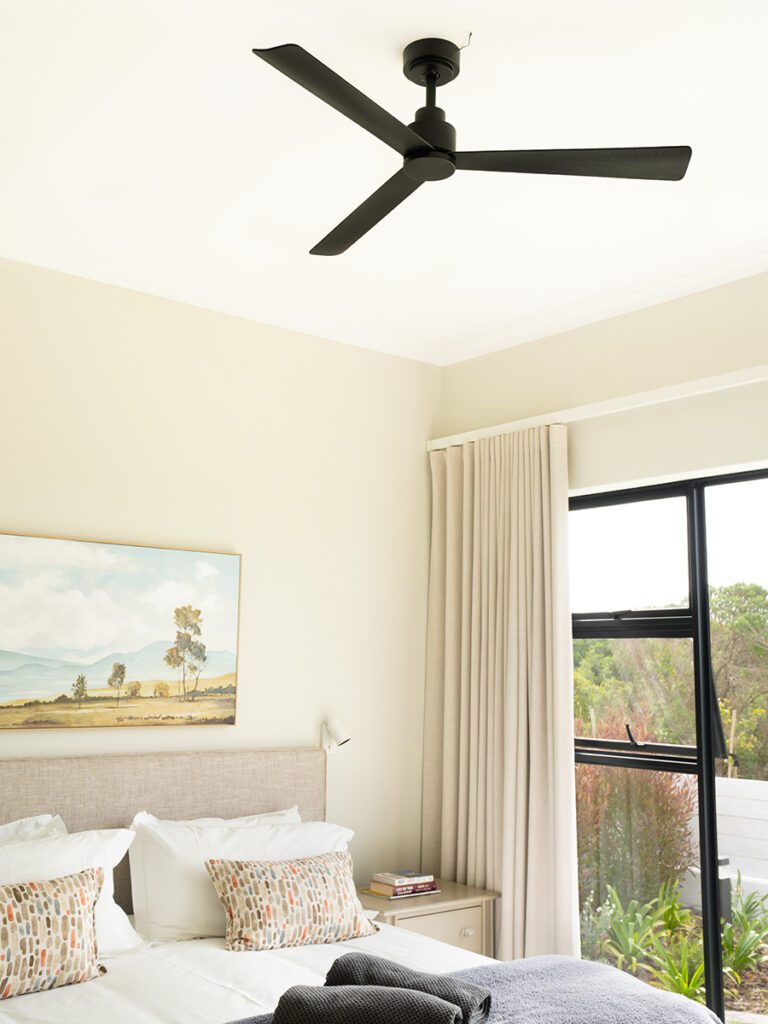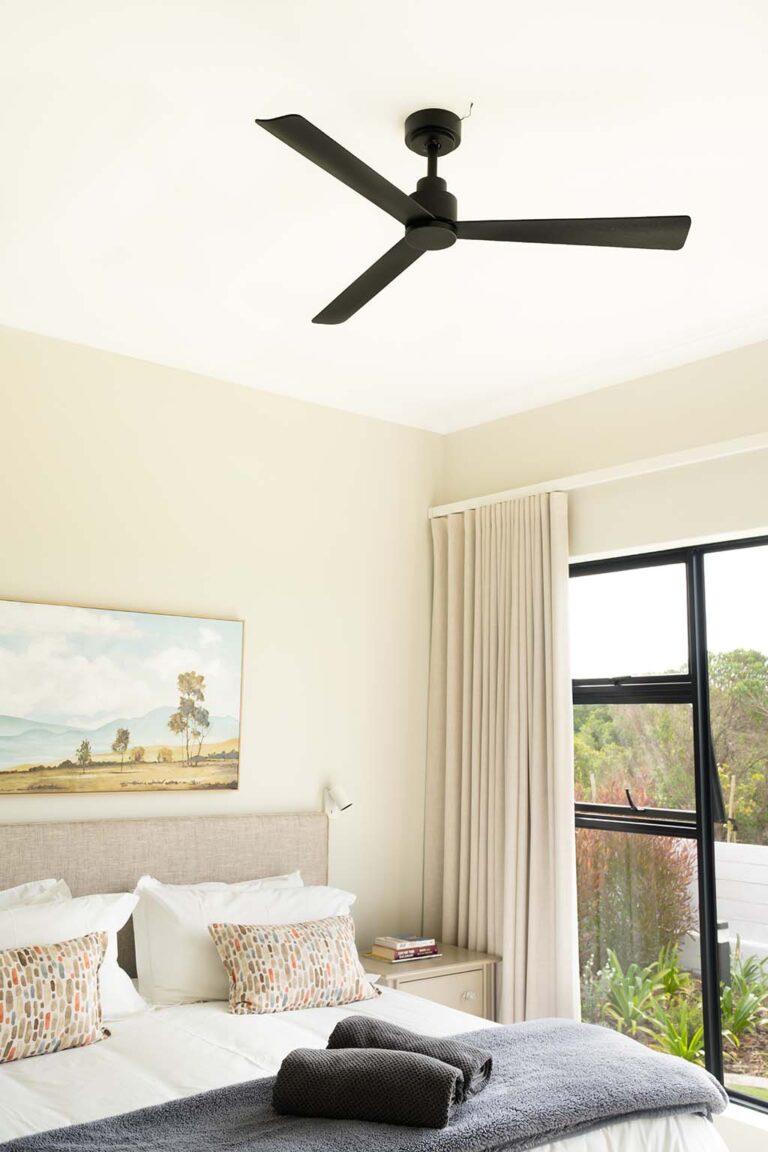
7 Tips for Choosing the Best Ceiling Fan
Share this post

A ceiling fan is more than just a functional fixture—it’s an integral part of your home’s comfort, style, and energy efficiency. With so many options on the market, from sleek modern designs to smart-enabled systems, choosing the right fan can feel overwhelming. Here are 7 tips for choosing the best ceiling fan.
1. Size Matters
The first thing to consider is the size of the fan relative to the room. A fan that’s too small won’t circulate air effectively, while an oversized fan can overpower the space—visually and functionally. As a rule of thumb:
- For rooms up to 10 sqm (like a small bedroom or study), choose a standing fan.
- For rooms between 10–20 sqm (such as standard bedrooms or kitchens), go for a fan between 105–140 cm like the mistral or Chinook.
For larger spaces like living rooms or open-plan areas, opt for fans over 130 cm like the Levante or the Aura.
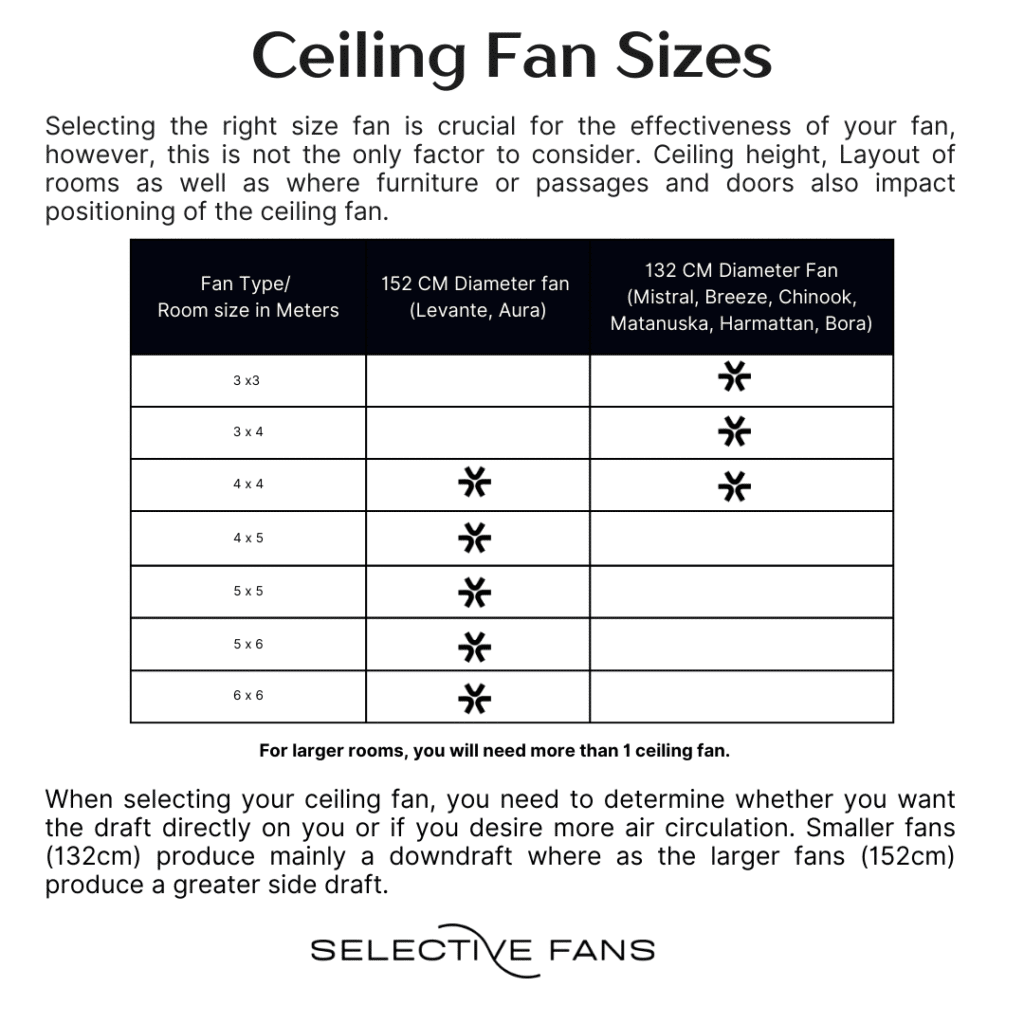
2. Consider Ceiling Height
The fan’s drop from the ceiling is critical for both safety and efficiency. Ideally, blades should be positioned about 2.1–2.4 metres from the floor. For low ceilings (under 2.6 metres), look for flush-mount or our Hygge ceiling fans. For higher ceilings, consider a downrod to bring the fan to the optimal height.

3. Think About Style
Today’s ceiling fans are as much about design as they are about function. Whether you prefer coastal, industrial, Scandinavian or minimalist interiors, there’s a fan to match. Look for finishes that complement your space—matte black for bold contrast, natural wood for warmth, or white for a barely-there aesthetic.
Your ceiling fan can either blend in or become a statement piece—choose what works best for your room’s character.
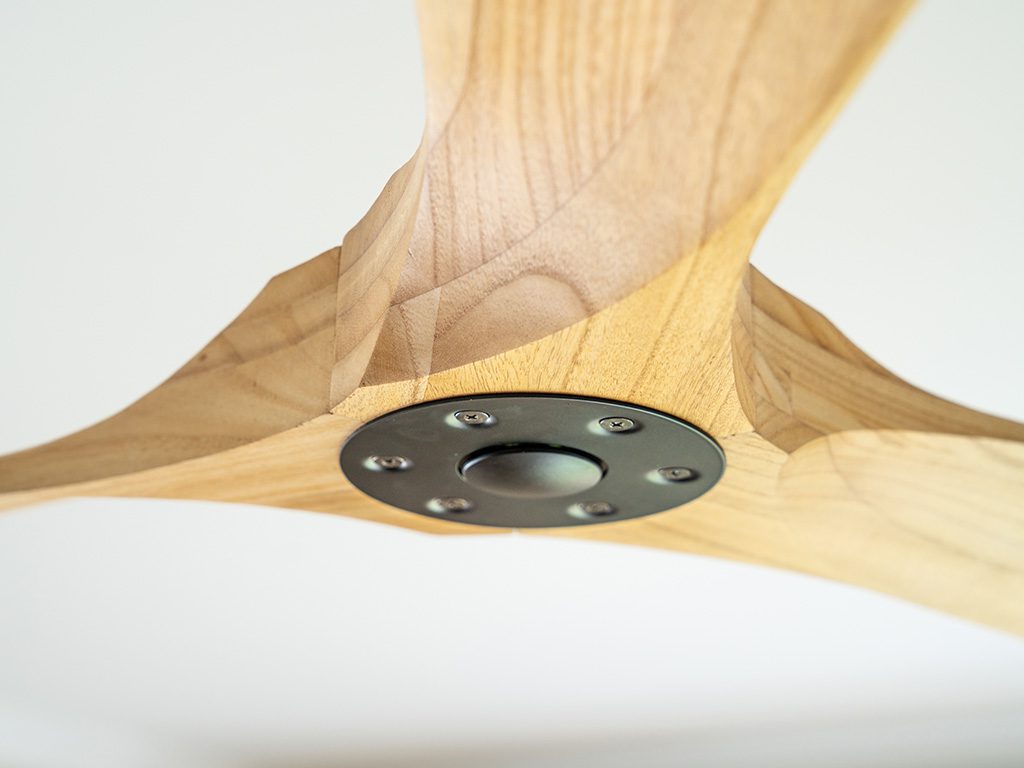
4. Check the Motor Quality
The motor is the heart of the fan. High-quality, energy-efficient motors run quietly, last longer, and move more air. Look for:
- DC motors: These are quieter, use less electricity, and often come with more speed settings.
Reversible motors: A must-have if you want to use your fan year-round. In summer, blades should spin counterclockwise to cool; in winter, switch to clockwise to circulate warm air.
5. Lighting or No Lighting?
If your fan is going in a room with limited overhead lighting, an integrated light kit can be a smart choice. LED options are energy-efficient and long-lasting. However, in spaces with good ambient light, a clean, light-free design might offer a more streamlined look.
Some fans also come with dimmable lights and colour temperature control—great for setting the right mood in bedrooms or living areas.
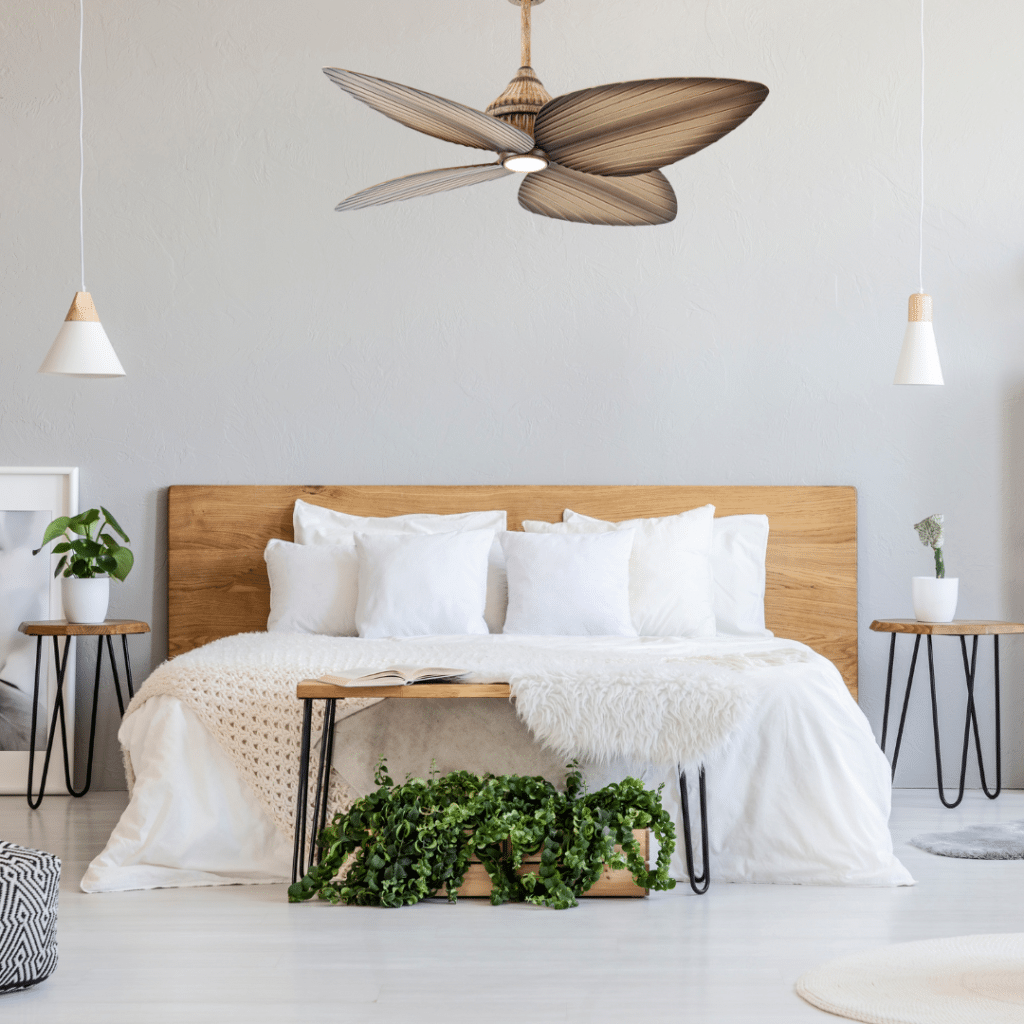
6. Remote Control and Smart Features
Convenience is key. Most modern ceiling fans come with remote controls or wall-mounted options. But if you want to future-proof your space, look for fans with smart features like:
- App control
- Voice activation via Google Assistant, Alexa or Siri
- Automated scheduling
These features can make your daily life easier and your home smarter.
7. Invest in Quality
While it can be tempting to go for the most budget-friendly option, a good ceiling fan is a long-term investment in comfort and energy savings. Premium fans often offer:
- Better performance
- Longer warranties
- Stylish, high-end finishes
- Quieter operation
Do your research, read reviews, and if possible, buy from a specialist store that can advise you based on your specific needs.
Choosing the best ceiling fan is about finding the right balance between form, function, and comfort. By paying attention to size, design, motor quality and control features, you’ll end up with a fan that enhances both the look and feel of your home. A well-chosen ceiling fan not only cools the space—it completes it.
We hope that our 7 tips for choosing the best ceiling fan will help you in your next purchase. Take a look at our shop for premium ceiling fans for modern homes and businesses.
Related Post


The Details That Matter: Choosing the Right Fan Colour, Wood & Height for Your Space
When it comes to elevating your interior design, few fixtures make as strong a statement as a beautifully designed ceiling
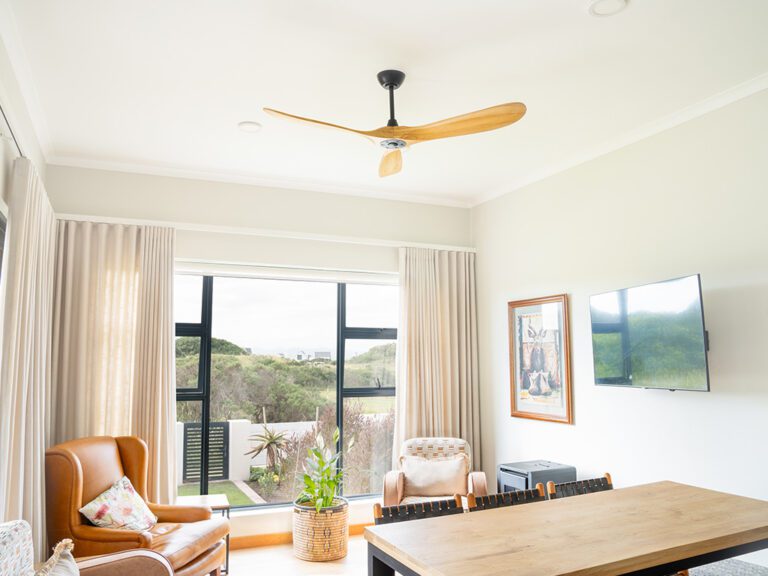
7 Tips for Choosing the Best Ceiling Fan
A ceiling fan is more than just a functional fixture—it’s an integral part of your home’s comfort, style, and energy
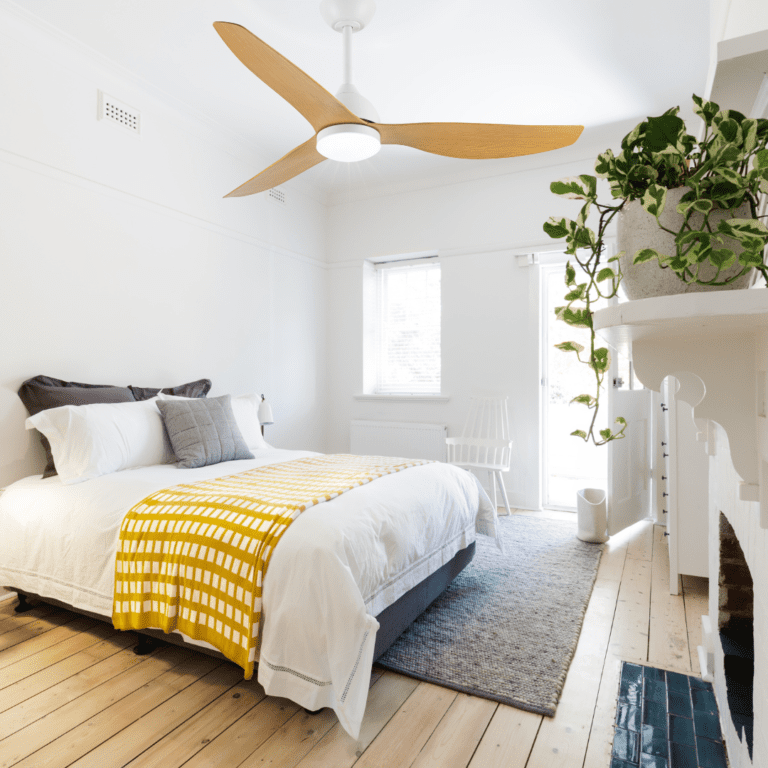
LED lights in Ceiling Fans
When it comes to enhancing your living spaces, a few additions combine functionality and style like LED lights in ceiling

